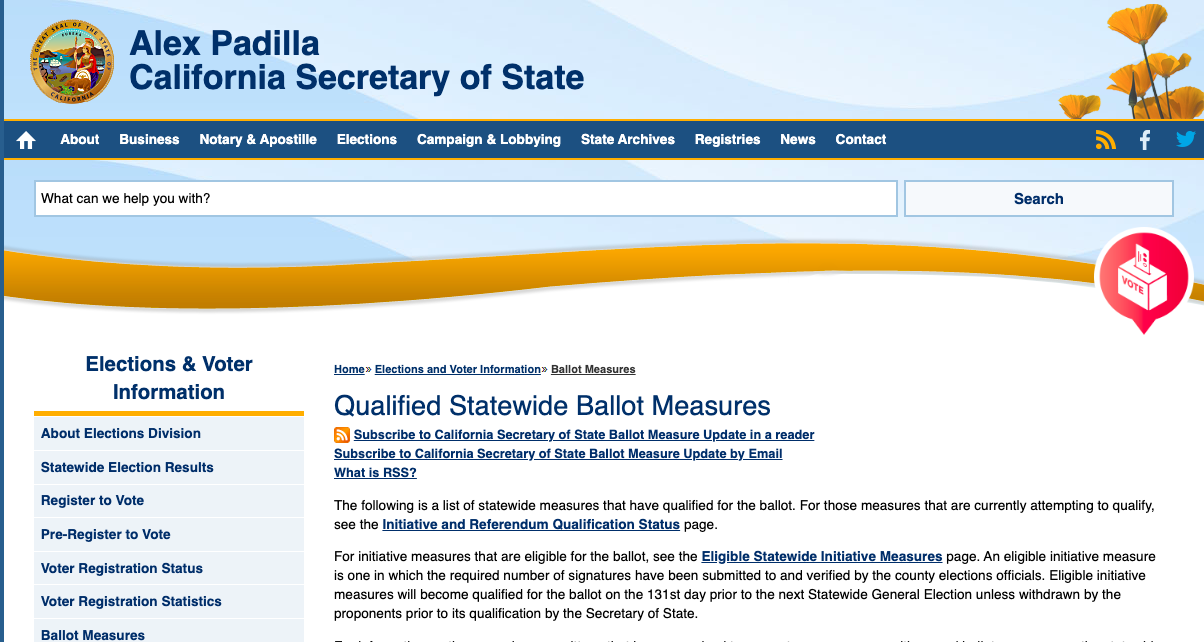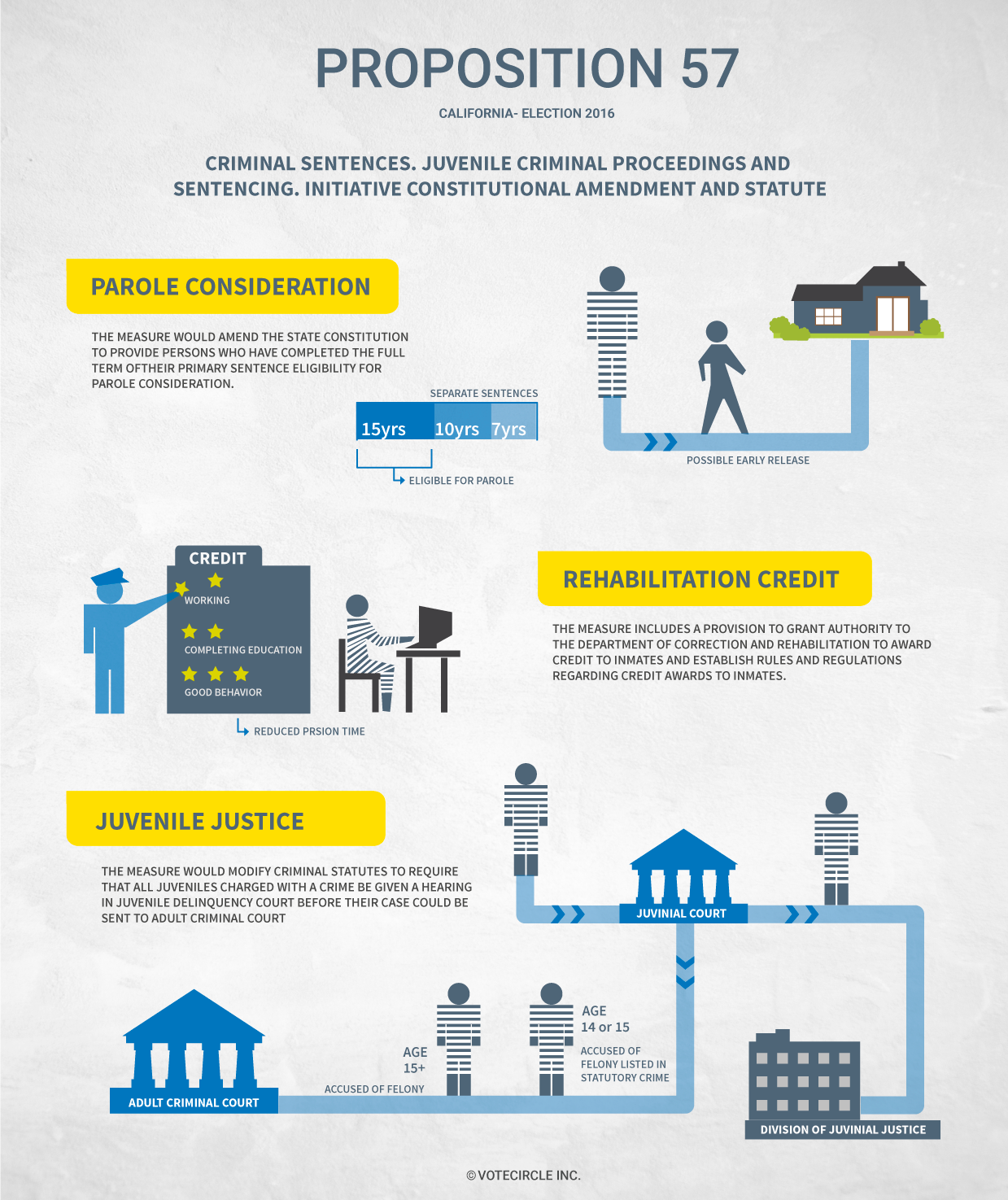
California Ballot Initiatives. (CA Secretary of State screen capture)
Standard Features of Initiative Measures
Does the initiative allow amendments by the Legislature?
By Chris Micheli, November 25, 2019 2:33 am
There are a number of provisions that are commonly contained today in proposed initiative measures. California Constitution Article II provides for this important form of direct democracy. Section 8(a) provides: “The initiative is the power of the electors to propose statutes and amendments to the Constitution and to adopt or reject them.”
When drafting initiative measures, there are several instances of standard language contained in those initiative measures. This article takes a brief look at several examples of that standardized language:
Amendments
Does the initiative allow amendments by the Legislature? According to California Constitution, Article 2, Section 10(c): “The Legislature may amend or repeal an initiative statute by another statute that becomes effective only when approved by the electors unless the initiative statute permits amendment or repeal without the electors’ approval.”
As a result, the general rule is that an initiative, once enacted by the electorate, can only be amended by another statewide measure adopted by the voters. In many instances, initiatives contain language that allows the Legislature to amend the law after adopted by the voters. The initiative language usually requires a super majority vote by the Legislature and requires the amendment to “further the purposes of the initiative.”
The following is an example of initiative language on amendments: “The provisions of Section 5 may be amended so long as such amendments are consistent with and further the intent of this act by a statute that is passed by a two-thirds vote of the members of each house of the Legislature and signed by the Governor.”
Severability
Does the initiative allow for provisions not struck down by a court to remain in effect? A severability clause generally refers to a provision in a ballot measure which states that, if some of the ballot measure are held to be illegal or otherwise unenforceable, the remaining provisions still remain in effect.
The following is an example of initiative language on severability: “The provisions of this Act are severable. If any portion, section, subdivision, paragraph, clause, sentence, phrase, word, or application of this Act is for any reason held to be invalid by a decision of any court of competent jurisdiction, that decision shall not affect the validity of the remaining portions of this Act.”
Some recent ballot measures include additional language: “The People of the State of California hereby declare that they would have adopted this Act and each and every portion, section, subdivision, paragraph, clause, sentence, phrase, word, and application not declared invalid or unconstitutional without regard to whether any portion of this Act or application thereof would be subsequently declared invalid.”
Defense of Initiative
Does the initiative allow the proponents or a third party to defend the measure’s validity if challenged in court? Generally, laws (including initiative measures) are defended by the Attorney General. However, there have been occasions when the AG has chosen not to defend the measure in a court of law. As a result, this provision is intended to grant legal standing to the proponents of the ballot measure to defend it.
The California Supreme Court has issued a decision regarding standing to defend a ballot measure’s legal validity. In a post-election challenge to a voter-approved initiative measure, the official proponents of the initiative were authorized under California law to appear and assert the State’s interest in the initiative’s validity and to appeal a judgment invalidating the measure when the public officials who ordinarily would defend the measure on appeal declined to do so.
In Perry v. Brown (2011) 52 Cal.4th 1116, the Supreme Court ruled that it is essential to the integrity of the initiative process embodied in Constitution Article II, Section 8 that there be someone to assert the State’s interest in an initiative’s validity on behalf of the people when the public officials who normally would assert that interest decline to do so, and the constitutional and statutory provisions relating to the California Attorney General’s authority and responsibilities do not preclude others from asserting the State’s interest in the validity of a challenged law.
The following is an example of initiative language on defending a measure: “Notwithstanding any other provision of law, if the State, or any of its officials fail to defend the constitutionality of this Initiative, following its approval by the voters, any other state governmental agency of this State shall have the authority to intervene in any court action challenging the constitutionality of this Initiative for the purpose of defending its constitutionality, whether such action is in state or federal trial court, on appeal, or on discretionary review by the Supreme Court of California and/or the Supreme Court of the United States.”
Competing Measures
Does the initiative set forth a rule if there is a competing or dueling measure on the same topic on the same ballot? One tactic that opponents sometimes employ to fight a ballot measure is to place a competing measure on the same statewide ballot. The goal is to persuade voters to vote for the competing measure and knock out the first measure.
Constitution Article II, Section 10(b) provides: “If provisions of two or more measures approved at the same election conflict, the provisions of the measure receiving the highest number of affirmative votes shall prevail.” Because of this rule, initiative proponents often specify that their measure, if it conflicts with another measure, but theirs receives more votes in favor, then they want to ensure that the other measure, in its entirety, does not take effect.
The following is an example of initiative language on the effect of competing measures: “In the event that this Initiative and another measure addressing this topic appear on the same statewide ballot, the provisions of the other measure shall be deemed to conflict with this measure. In the event that this Initiative receives a greater number of affirmative votes than a measure deemed to conflict with it, the provisions of this Initiative shall prevail in their entirety, and the other measure shall be null and void.”
Effective Date
Does the initiative specify an effective or operative date? The effective date is when the measure is officially “on the books,” while the operative date is when the measure’s provisions are enforceable. Constitution Article II, Section 10(a) provides: “An initiative statute or referendum approved by a majority of votes cast thereon takes effect on the fifth day after the Secretary of State files the statement of the vote for the election at which the measure is voted on, but the measure may provide that it becomes operative after its effective date.”
The following is an example of initiative language on the effective date: “This Act shall take effect upon approval by the voters as provided in Article II, Sec. 10 of the California Constitution.” An example of additional language with different dates is the following: “The provisions of this Act shall apply in any action that has not been resolved by way of a final settlement, judgment, or arbitration award as of the effective date of this Act, provided that Section Two of the Act shall apply prospectively to cases filed 90 days or more after the Act takes effect.”
Construing the Measure
Does the initiative provide any rule for courts to follow in construing the initiative’s provisions? Occasionally an initiative measure provides specific guidance to the courts when interpreting the law’s provisions.
The following is an example of initiative language on the construing the measure: “This Initiative shall be liberally construed to effectuate its purposes.”
While initiatives do not have to contain all of these provisions, they have become more common and standard in ballot initiatives. Proponents should study the relevant law in each area and determine whether to include one or more of these provisions in their measure.
- Bonds and Undertakings in California - December 21, 2025
- Pleadings in Eminent Domain Cases - December 20, 2025
- Complaint Resolution in Child Support - December 20, 2025




